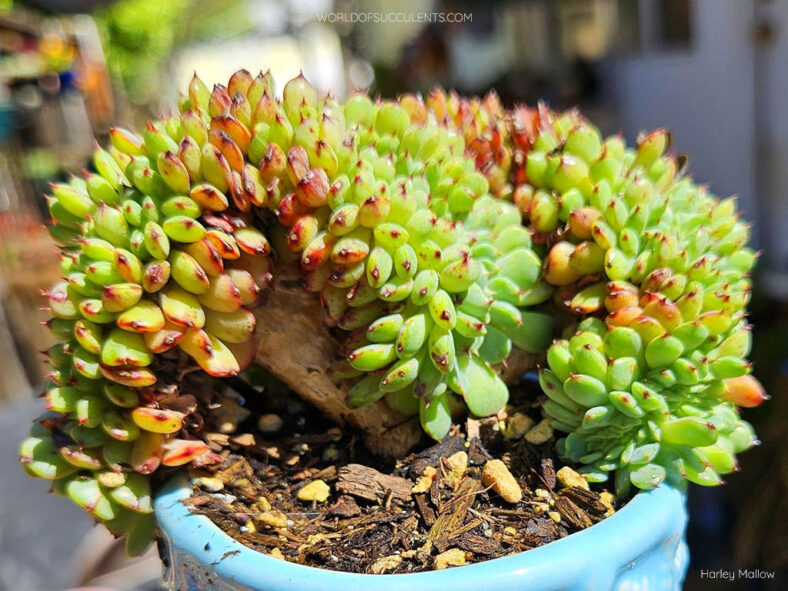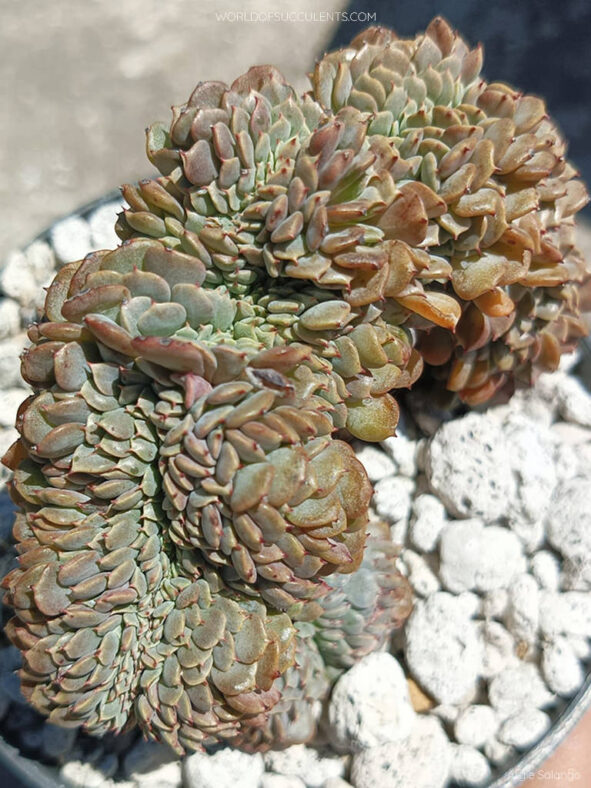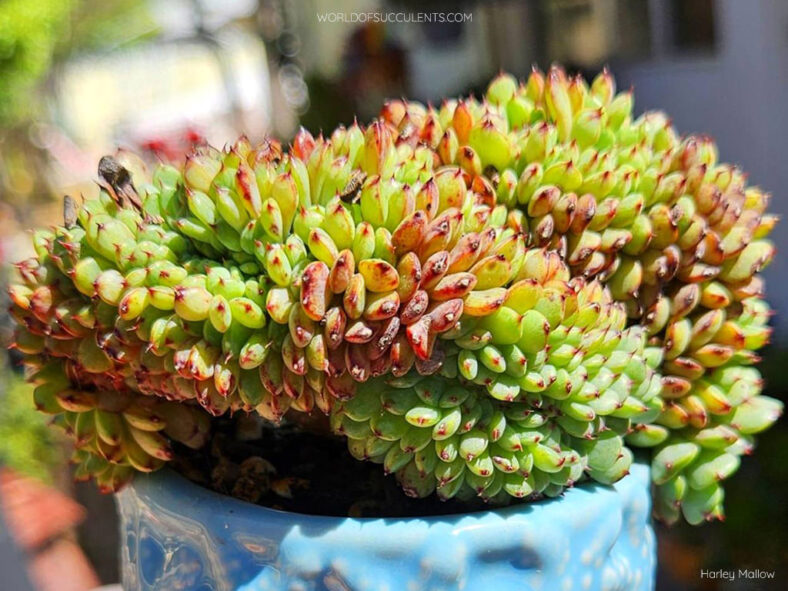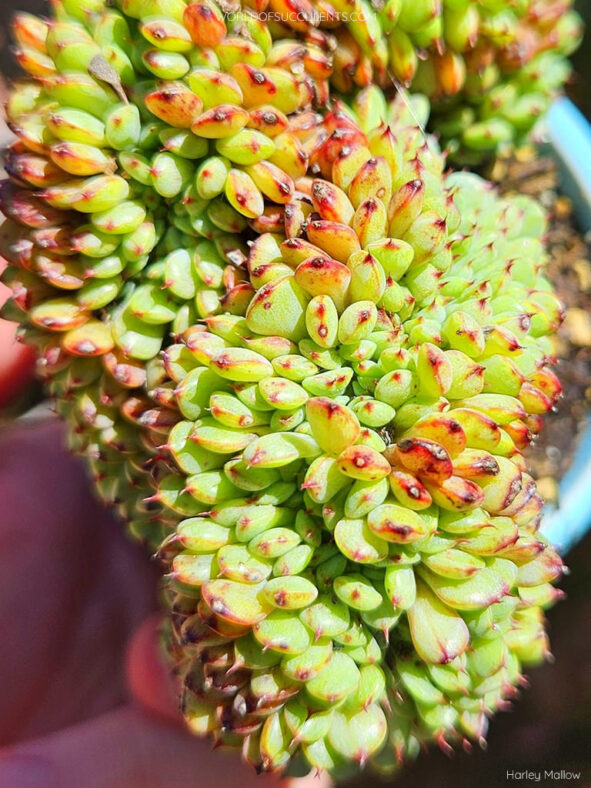Echeveria minima f. cristata is a small plant that creates beautiful, sculptural shapes as it matures, making it an excellent addition to your collection.
Scientific Name
Echeveria minima f. cristata
Accepted Scientific Name
Echeveria minima
Scientific Classification
Family: Crassulaceae
Subfamily: Sempervivoideae
Tribe: Sedeae
Genus: Echeveria
Etymology
The formal epithet "cristata" (pronounced "kris-TAY-tuh") means "tufted, crested, plumed."
Origin
Echeveria minima is native to Mexico. Echeveria minima f. cristata is a form of Echeveria minima selected for its mutated growth.
Description
Echeveria minima f. cristata is an intriguing succulent with thick, fleshy, densely packed leaves along flattened stems. The leaves are glaucous green, with a short, pointed tip and a reddish tinge along their upper margins. Unlike the normal Echeveria minima form, the crested form has smaller leaves, and each specimen has a unique and captivating shape.

How to Grow and Care for Echeveria minima f. cristata
Light: Echeveria minima f. cristata requires full sun to partial shade for optimal growth. Therefore, place it near the brightest window in your home. If you move the plant outside in the spring, gradually acclimate it to less intense afternoon sun.
Soil: Having soil that drains quickly is most important for growing healthy succulents. While many growers prefer to create their own soil mix, using a commercial soil mix designed for succulents will also work well for this plant.
Temperature: High temperatures are not a problem as long as there is plenty of fresh air to circulate. However, Echeveria minima f. cristata is a tender succulent that must be brought indoors if there is a risk of freezing temperatures. It grows best in USDA Plant Hardiness Zones 10a to 11b, with average minimum winter temperatures ranging from 30°F to 50°F (- 1.1°C to 10°C).
Watering: This plant prefers the "soak and dry" method during the growing season. Water deeply and then let the soil dry out completely before watering again. Water sparingly during the winter, only enough to keep the plant from shriveling. Above all, if you have a saucer under the pot, do not forget to empty the excess water.
Fertilizing: Although it can grow well without fertilizer, Echeveria minima f. cristata may benefit from extra nutrients. Feed only during the growing season and use a water-soluble fertilizer diluted to half-strength.
Repotting: If growing in a container, repot as needed in spring or early summer. Ensure the soil is dry before starting. Also, always use a container with drainage holes.
Propagation: Echeveria minima f. cristata can be propagated by leaves or offsets during the growing season.
Learn more at How to Grow and Care for Echeveria.
Toxicity of Echeveria minima f. cristata
Echeveria minima f. cristata has no reported toxic effects and is safe to grow around children and pets.
Links
- Back to genus Echeveria
- Succupedia: Browse succulents by Scientific Name, Common Name, Genus, Family, USDA Hardiness Zone, Origin, or cacti by Genus
Photo Gallery
Click on a photo to see a larger version.


